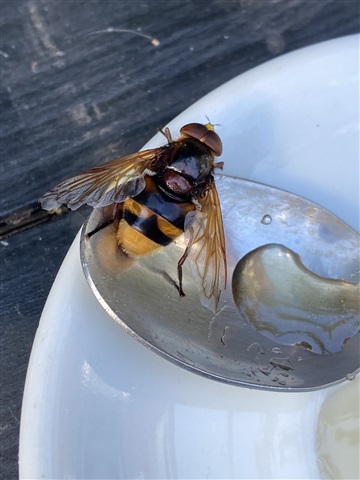A couple of days ago, I had my first encounter with a Hornet mimic hoverfly; as the name states, it's a hoverfly, mimicking a hornet.


 Hornet Mimic Hoverfly: Nancy Brown
Hornet Mimic Hoverfly: Nancy Brown
It’s a fly that looks like a big bee… but not quite. At first, we thought it was some sort of hornet, but it didn’t look big enough, or quite like hornets that we’d seen before. After some online research, we discovered that it was a…